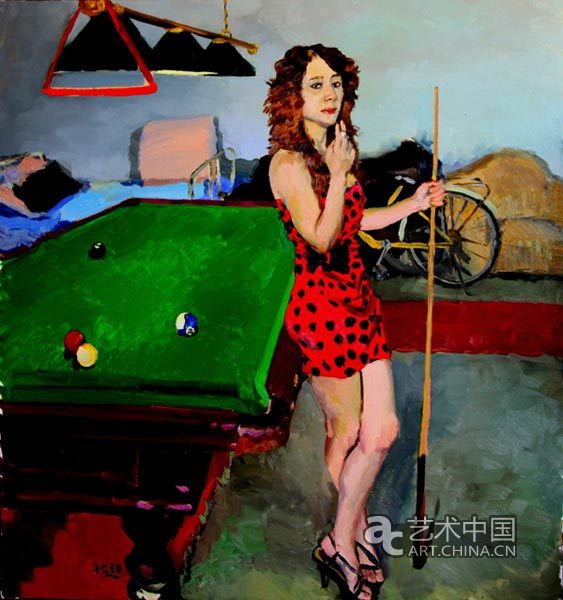
劉小東,小豆在臺(tái)球廳閑著,2010,布面油畫,140x150cm,圖片由藝術(shù)家提供
展覽地點(diǎn):UCCA大展廳
展覽時(shí)間:2010.11.17 – 2011.02.20
11月,尤倫斯當(dāng)代藝術(shù)中心將推出本年度最后一個(gè)大展:《劉小東:金城小子》。為了該展,劉小東回到了他的故鄉(xiāng)遼寧省金城鎮(zhèn)。從今年7月到10月,他在金城將他的家人、童年的朋友一一描繪在畫布上,同時(shí)也用日記、速寫、照片等多種形式記錄下他這段時(shí)間的生活。在此期間,臺(tái)灣著名導(dǎo)演侯孝賢將跟拍劉小東的此次創(chuàng)作,通過影像立體地展示劉小東的金城回憶。
劉小東來自一個(gè)人口不到1萬的小鎮(zhèn)金城,距離遼寧省錦州市25公里。在這個(gè)小鎮(zhèn)里有一家造紙廠,創(chuàng)建于20世紀(jì)30年代。他家的所有家庭成員都曾在造紙廠工作。至今,造紙仍然是金城的唯一經(jīng)濟(jì)支柱。過去幾十年間中國(guó)農(nóng)村的飛速發(fā)展和日益嚴(yán)重的環(huán)境問題,給造紙廠和整個(gè)鎮(zhèn)子都帶來了巨大的變化。他曾經(jīng)居住的房子、狹窄的街道、一些老舊的建筑雖然經(jīng)受住了時(shí)間的考驗(yàn),但在劉小東離開的這30年里,早已物是人非。
此次為尤倫斯當(dāng)代藝術(shù)中心特別打造的展覽《劉小東:金城小子》將展出20多幅劉小東的全新繪畫作品,200余篇生活記錄,以及侯孝賢導(dǎo)演拍攝的紀(jì)錄片,第一次完整、全面地呈現(xiàn)出著名藝術(shù)家劉小東的創(chuàng)作歷程和藝術(shù)實(shí)踐。
Liu Xiaodong: Hometown Boy
UCCA Big Hall
November 17, 2010–Februrary 20, 2011
This November, UCCA presents Liu Xiaodong: Hometown Boy, an intensive look into the practice of one of China’s most accomplished painters. For this solo show, created specifically for UCCA, Liu Xiaodong returned to his hometown of Jincheng in Liaoning Province to spend three months painting his family and childhood friends while documenting the experience through diary entries, sketches and photographs. In addition to the 20 new paintings and over 200 pages of diary entries on display, the exhibition also features a documentary about Liu Xiaodong’s homecoming by famed Taiwanese director Hou Hsiao-Hsien. Through painting, writing and film, Hometown Boy offers an unusually panoramic view of Liu Xiaodong’s Jincheng memories, past and present.
When Liu Xiaodong left his hometown as an aspiring 17-year-old art student, Jincheng was a bustling little town where life revolved around the local paper mill. Three decades later, the physical, social and economic landscape has changed drastically: Jincheng’s narrow streets and houses remain, but the local economy has crumbled, unemployment is rampant, and years of environmental degradation have taken their toll. For the artist, it is a homecoming in which observations and depictions of the present are tinged with recollections of a vanished past.